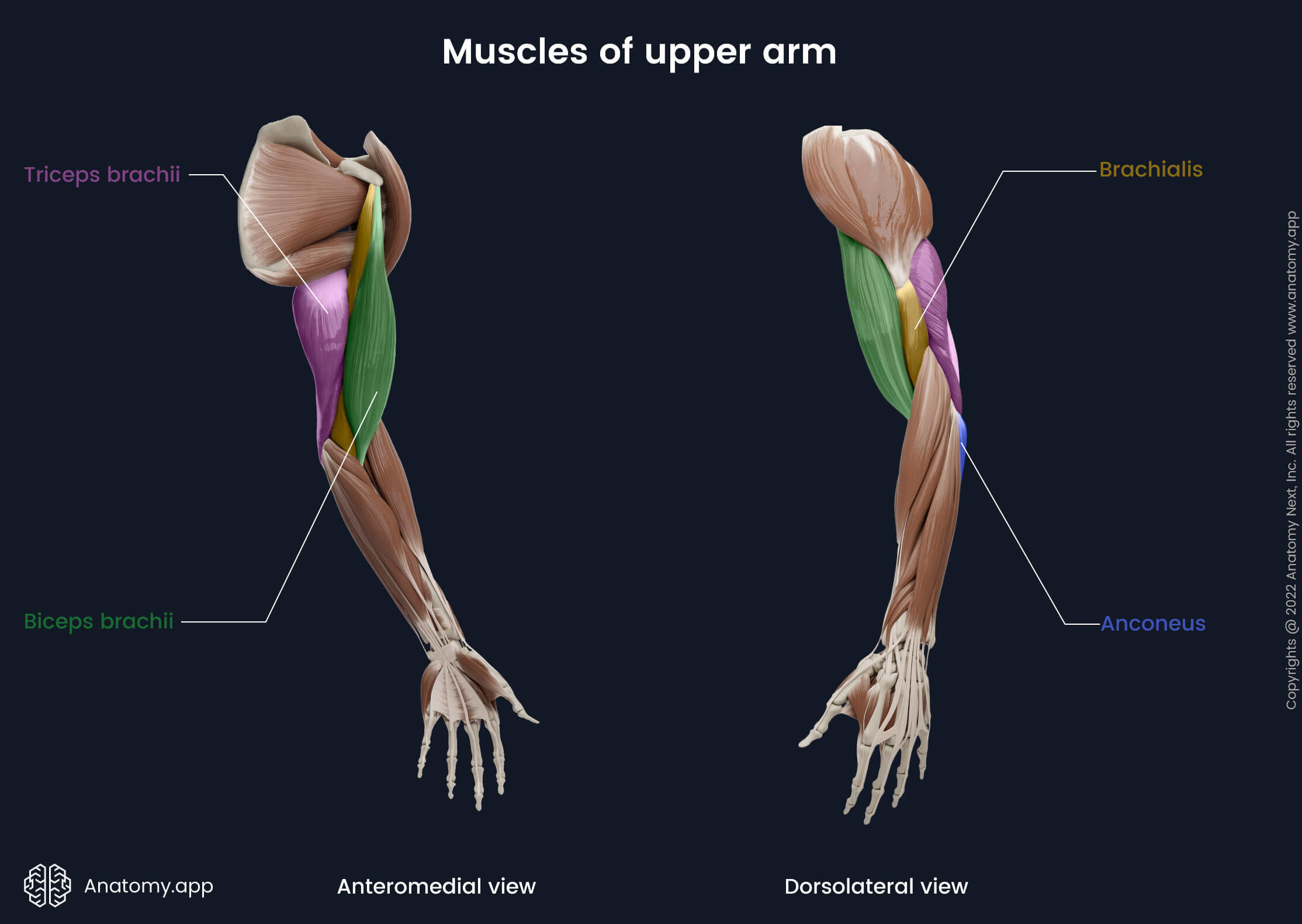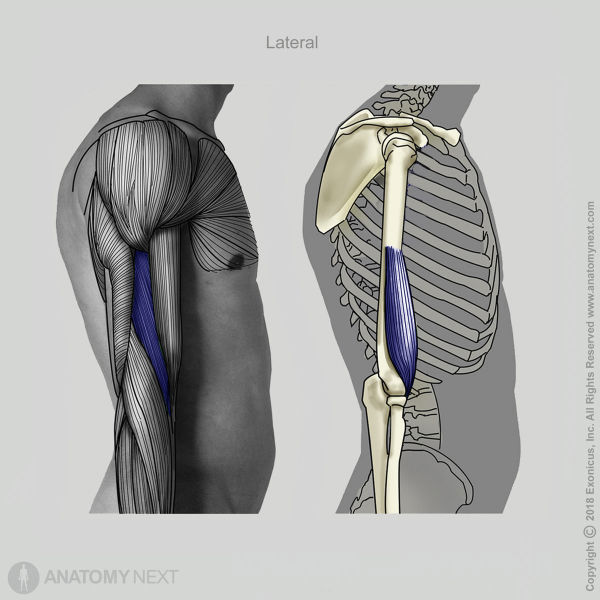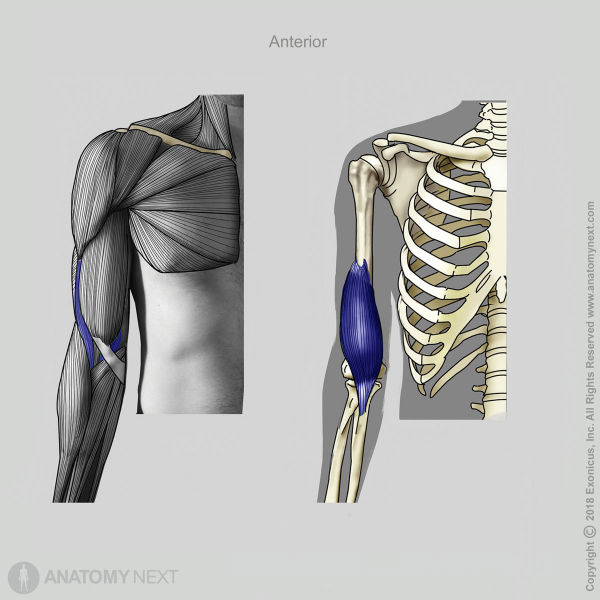- Anatomical terminology
- Skeletal system
- Joints
- Muscles
- Head muscles
- Neck muscles
- Muscles of upper limb
- Muscles of pectoral girdle
- Muscles of shoulder region
- Muscles of upper arm
- Anterior compartment
- Posterior compartment
- Muscles of forearm
- Muscles of hand
- Thoracic muscles
- Muscles of back
- Muscles of lower limb
- Heart
- Blood vessels
- Lymphatic system
- Nervous system
- Respiratory system
- Digestive system
- Urinary system
- Female reproductive system
- Male reproductive system
- Endocrine glands
- Eye
- Ear
Brachialis
The brachialis (Latin: musculus brachialis) is a thick, broad spindle-shaped muscle of the upper arm that extends between the humerus and ulna. It is located in the anterior compartment of the upper arm under the biceps brachii muscle. The brachialis is one of the forearm flexors acting at the elbow joint.
| Brachialis | |
| Origin | Anterior surface of distal humerus |
| Insertion | Tuberosity and coronoid process of ulna |
| Action | Flexion of forearm |
| Innervation | Musculocutaneous nerve, radial nerve |
| Blood supply | Branches of brachial, recurrent radial and ulnar collateral arteries |


Origin
The brachialis muscle originates from the anterior surface of the lower part of the humerus.

Insertion
The brachialis inserts on the tuberosity and coronoid process of the ulna.
Action
The primary function of the brachialis muscle is the flexion of the forearm.
Innervation
The brachialis is innervated by the musculocutaneous nerve, a branch of the brachial plexus (C5 - C6). Also, it is supplied by the fibers arising from the C7 root of the brachial plexus (radial nerve).
Blood supply
The brachialis muscle primarily receives arterial blood supply from the branches of the brachial and recurrent radial arteries. Occasionally, the ulnar collateral arteries also provide the supply.